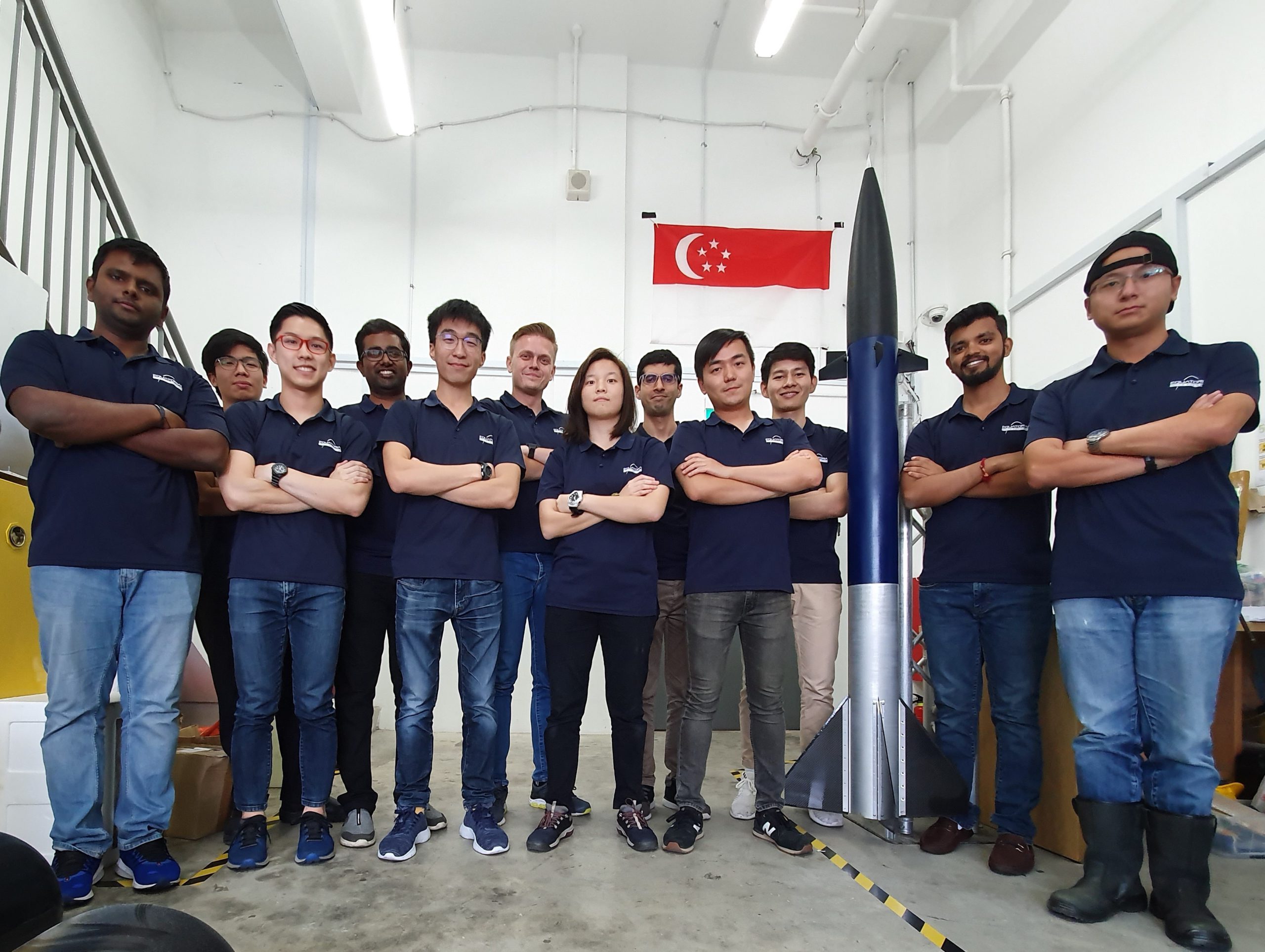This story originally appeared in Open Source, our weekly newsletter on emerging technology. To get stories like this in your inbox first, subscribe here.
Space launches are massive endeavors. Payloads are typically sent into space riding on rockets that consume huge amounts of fuel to counteract Earth’s gravitational pull. This means launches are often expensive, risky, and environmentally unfriendly affairs. But what if there’s a gargantuan catapult that can toss payloads into space without needing fuel-thirsty rockets? This sounds like science fiction, but it’s the approach undertaken by space technology company SpinLaunch.

Hurling payloads into space
Here’s how SpinLaunch’s space catapult works:
- The payload is inserted into a dart-shaped projectile that’s attached to a long and sturdy carbon fiber tether. This tether is affixed to and encased in the centrifuge-like system which also acts as a vacuum chamber to reduce internal air friction.
- The system is powered by an electric motor drive that enables it to rotate the tethered projectile progressively till it reaches a speed approximating 5,000 mph (around 8,100 km/h).
- When the target speed has been achieved, the system releases the projectile from its tether to send it into its chimney-like exit tube that runs vertically along the rim of its chamber. This motion propels the projectile out of the chamber, breaching a membrane-like vacuum seal with enough kinetic energy to send it into space, where the payload is subsequently released.
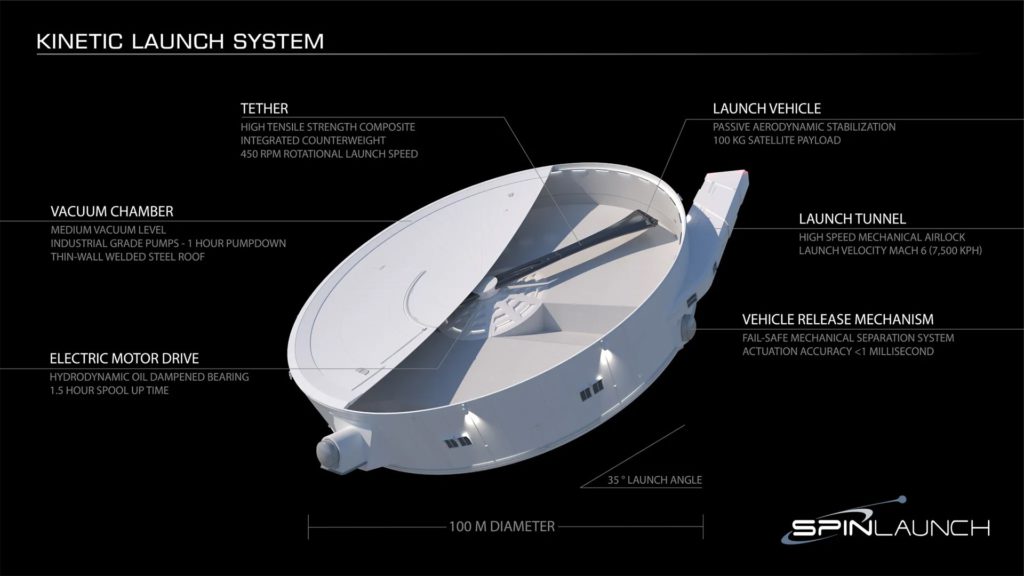
SpinLaunch’s idea sounds terrific on paper. Leveraging kinetic energy in lieu of fuel can offer several advantages for space launches. David Wrenn, vice president of technology at SpinLaunch, summarizes these benefits into three aspects:
- Cost: Around 92% of each rocket’s composition is allocated to store fuel used to power its launch into space. The cost of space launches are therefore subjected to rising fuel prices, exacerbated by economic inflation. Rockets also come with a hefty price tag, requiring expensive materials and expertise to engineer. In addition, most rockets, excluding rare exceptions like SpaceX’s Falcon 9, are designed for single-use—meaning a new rocket has to be used for every launch. By removing traditional fuel-based rockets from the equation, SpinLaunch’s electric-powered solution could significantly cut costs.
- Cadence: Launching rockets is a complex operation that requires personnel, equipment, and infrastructure, often requiring giant launch pads to be constructed. Therefore, space launches, with little margin for error, have typically been rigorous events with long turnaround times. SpinLaunch’s system would theoretically be able to support more frequent space launches. In April 2022, Wrenn told Aerospace Testing International that SpinLaunch envisioned it eventually supporting at least 1,000 launches per year.
- Sustainability: Relying less on combustible fuels will significantly lighten the carbon footprint of SpinLaunch’s system. Lowering fuel consumption for space launches could also extend the lifespan of associated projects, enabling payloads to conserve more fuel for subsequent use. For example, India’s recent Chandrayaan-3 launch utilized the Launch Vehicle Mark-3 (LVM3) rocket, using around 88% of 1,696.4 kilograms of fuel stored in its propulsion module to complete its journey. With the remaining fuel (around 150 kilograms) expected to keep the project operational for years, further reductions in fuel consumed at takeoff could stretch the lifespan of such projects even further.
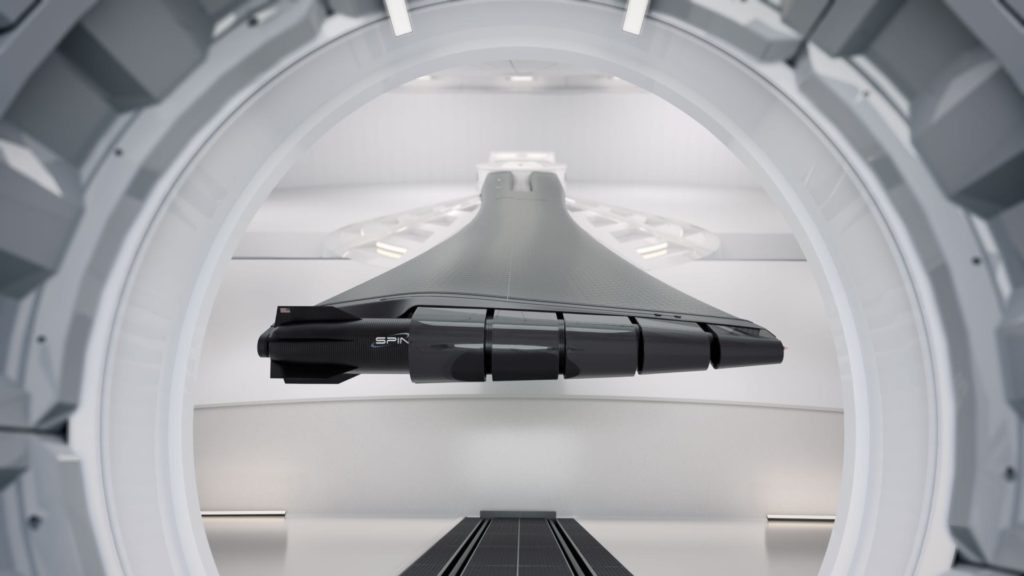
Does the solution work?
Seven years after SpinLaunch was founded, the company completed its first test launch in October 2021 using a system that measures nearly 33 meters in diameter, around a third of the size it hopes to achieve with the “orbital accelerator” system. The following year, SpinLaunch conducted nine more “suborbital” launches, though these launches—including the one from the preceding year—were technically proof-of-concepts at best: the payloads used reached only altitudes that commercial jet airliners can already attain.
Short of the required size and scale (according to its calculations), SpinLaunch raised USD 71 million in September 2022 from several investors, pledging to use the funds to build a system thrice the size of the “suborbital accelerator” model it has been utilizing. Its premise is straightforward: larger systems with longer arms (tethers) equals more force generated à la Newton’s second law. It remains unclear when SpinLaunch’s full-sized system will be ready.
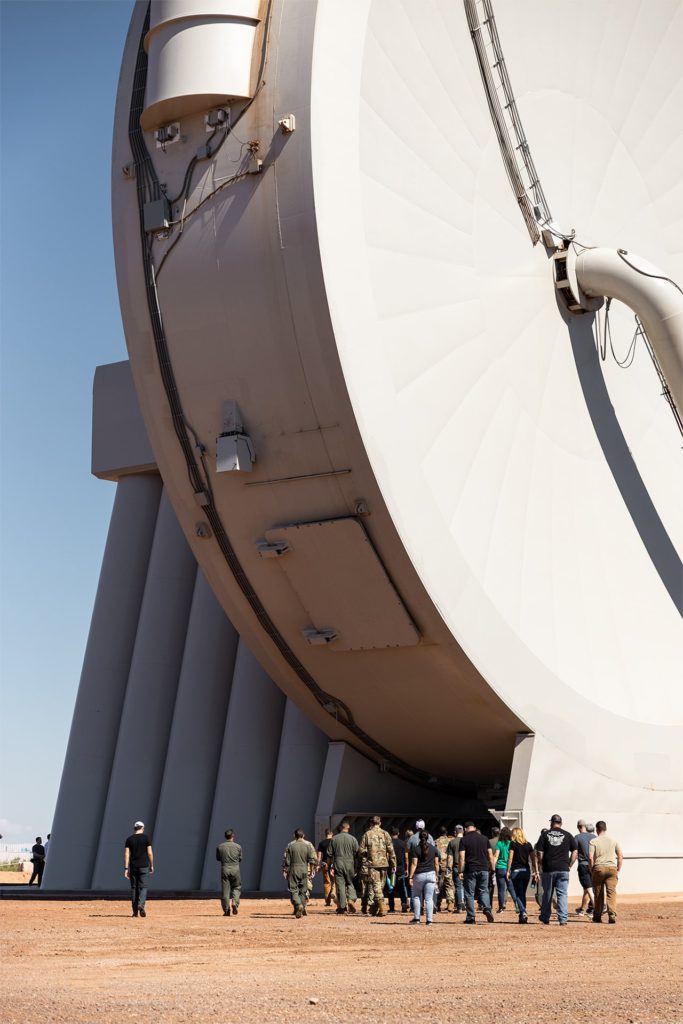
Democratizing access to space
Space launch technology may still be regarded as a nascent industry, but it’s a fast-growing one with multiple players vying for a share of the space (pun unintended).
SpinLaunch has consistently touted cost as one of its unique selling points, claiming it will eventually be able to put satellites into low Earth orbit (LEO) for about USD 250,000 each, which it estimated to be “roughly one-fifth the cost of today’s systems.” But space launch heavyweight SpaceX has steadfastly progressed in its mission to democratize space access, having gradually reduced the cost of space launches using its Falcon launch vehicles.
Based on data collected between 2019 and 2022, SpaceX’s launch costs averaged between USD 1,500–2,720 per kilogram of payload, depending on launch vehicle type and desired orbit. The lowest cost hitherto is USD 1,500 per kilogram, reported for several launches using SpaceX’s Falcon Heavy vehicle to reach LEO.
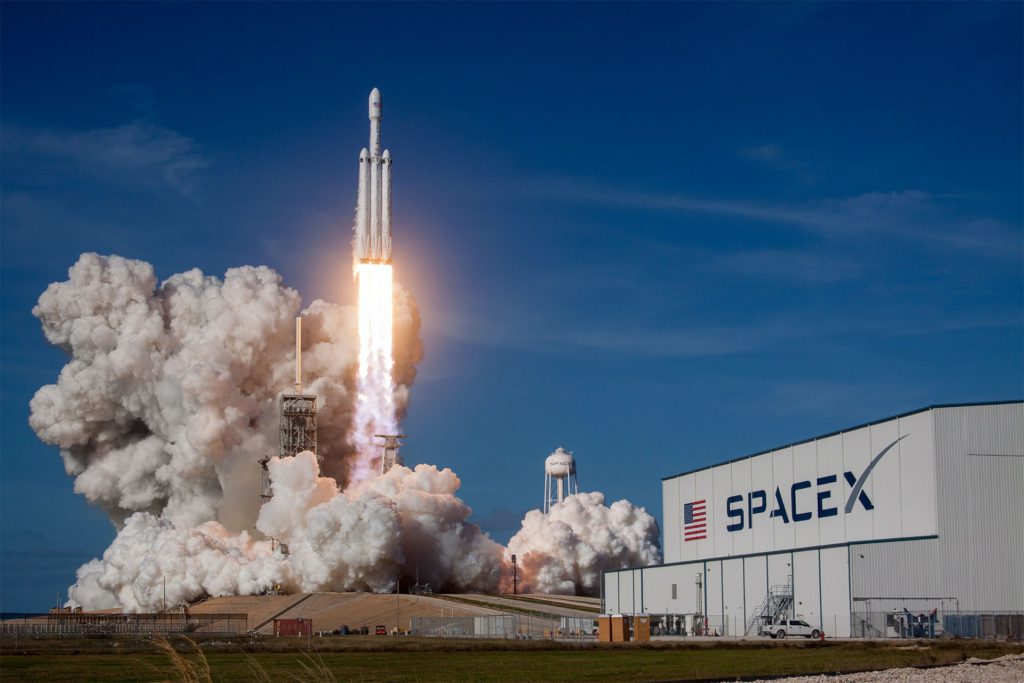
SpaceX also recently unveiled a cost-effective “rideshare” program designed to send small satellites into space using its reusable Falcon 9 rocket, while its flagship Starship project, which remains in development, could eventually lower launch costs even further.
Beaten by gravity
SpinLaunch isn’t the first to imagine using catapults to reach space. In a science fiction novel titled “The Moon is a Harsh Mistress,” written by Robert A. Heinlein and published in 1966, the concept of a “linear accelerator” is cited as a means to launch payloads into space using electromagnetic propulsion.
That concept is similar to SpinLaunch’s centrifugal system, albeit with a key point of note: the book describes it being used on the moon. With weak gravity and a thin atmosphere, it’s fair to speculate that there’s less resistance to counteract against when launching payloads off the moon.
Conditions on Earth—strong gravitational pulls and a dense atmosphere—however, land less kindly for SpinLaunch’s system, raising questions about its practicality. Tesla and SpaceX founder Elon Musk himself chimed in, citing the book and sharing his skepticism of the concept for the same reasons.
Opportunities still exist
Suppose Musk is right about the impracticality of launching payloads from Earth, viable use cases may still exist for SpinLaunch’s system.
Adjacent to the space launch industry are various sectors that feed off payload and satellite launches, such as telecommunications, comprising players that are calling for a more economic paradigm to space launches. Even if SpinLaunch’s technology doesn’t develop to the extent capable of bringing payloads far into space, it could still pivot to become an affordable, sustainable, and more importantly, scalable way of sending payloads into lower orbits.

SpinLaunch won’t be alone if it decides to pursue this route. In Singapore, space technology startup Equatorial Space Systems is among the first-movers carving out space in this niche. The Singapore-based company develops modular, low-cost launch vehicles tailored specifically to send lightweight payloads to LEO. Its unique selling points overlap with SpinLaunch, similarly emphasizing cost, safety, and sustainability.
“The total addressable market for suborbital launch from our research can be as high as USD 150 million a year,” said Simon Gwozdz, founder and CEO of Equatorial Space Systems, when KrASIA interviewed him in December 2020.
Nevertheless, the iron must be struck while it’s hot. While opportunities remain up for grabs in this industry, McKinsey predicts that the trajectory of its growth will ultimately hinge on the progress of SpaceX’s Starship project. Satellites and small payloads sent to lower orbits typically have long lifespans, resulting in infrequent refresh cycles. Thus, SpinLaunch needs to seize the opportunity early if it wants to tap into the unmet demand.

